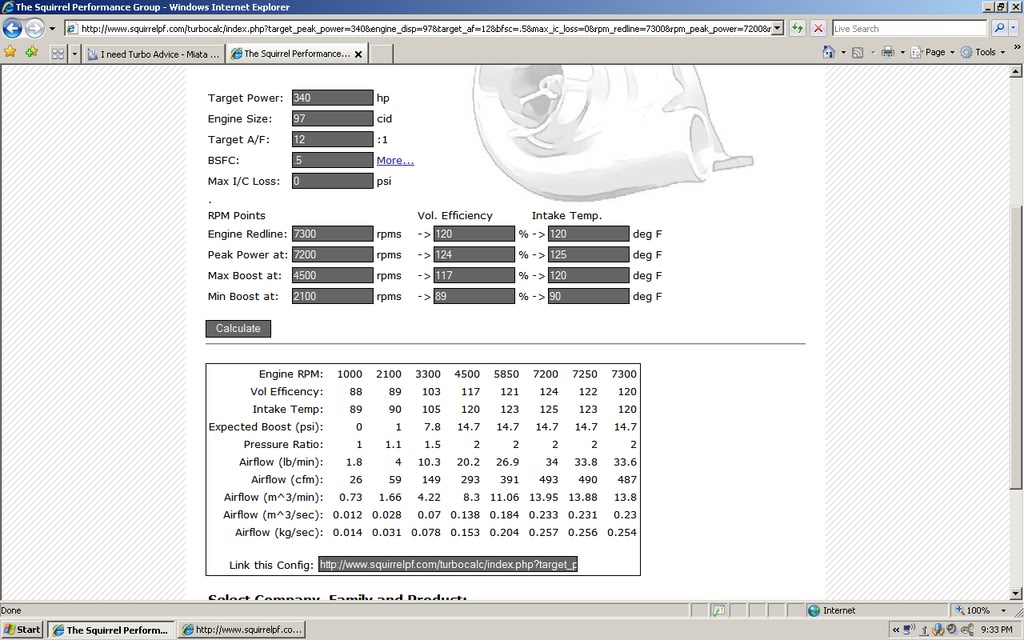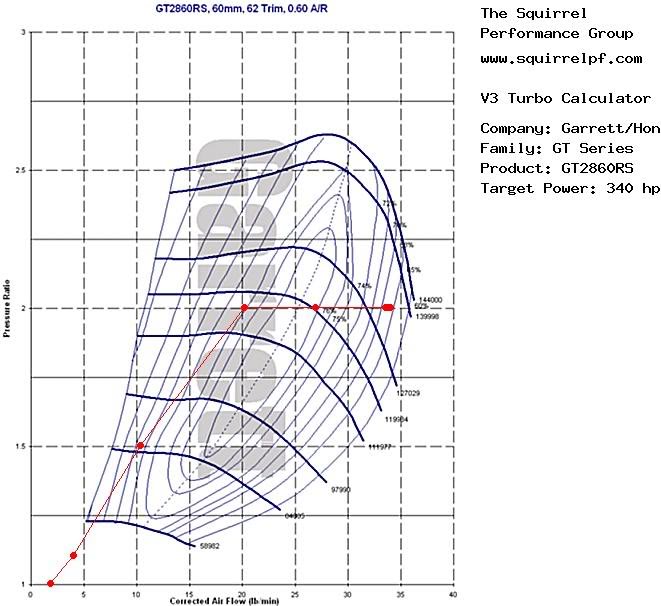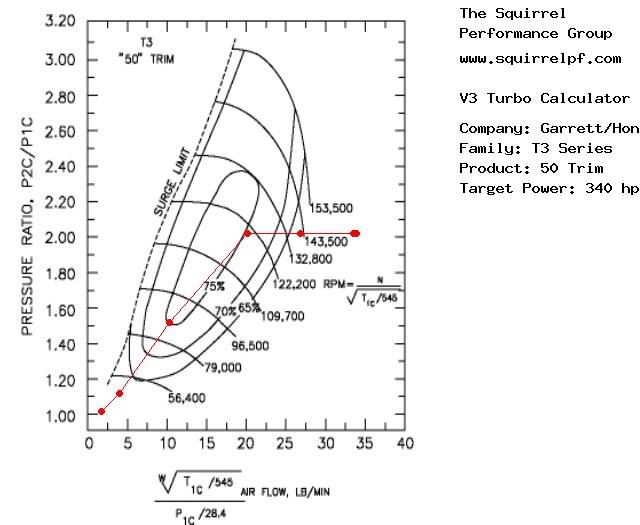I need Turbo Advice
#1
Alright, since I have a good job and no debt Im building up the car again.
So far I have the MSPNP, AFM removed, and LC-1 WB.
I have a T3 "50", which I love (based on its compressor map)
The problem: I had the T3 rebuilt from some guy in Arizona and he didnt do it right. Unfortunately it was during school and I didn't have time to fight him. The turbo doesn't spin nearly as free as it should.
Should I
A) rebuild the turbo again, then send it to begi and get a manifold and dp. -> $1000
B) give up on this turbo get a used GT2554r, used begi mani, and used d/p -> $1000
C) get a new GT2860RS, begi manifold and d/p ->1300
So far I have the MSPNP, AFM removed, and LC-1 WB.
I have a T3 "50", which I love (based on its compressor map)
The problem: I had the T3 rebuilt from some guy in Arizona and he didnt do it right. Unfortunately it was during school and I didn't have time to fight him. The turbo doesn't spin nearly as free as it should.
Should I
A) rebuild the turbo again, then send it to begi and get a manifold and dp. -> $1000
B) give up on this turbo get a used GT2554r, used begi mani, and used d/p -> $1000
C) get a new GT2860RS, begi manifold and d/p ->1300
#3
Yeah thats what I was thinking, Im wdonering if i should risk it on the chinacharger.
http://cgi.ebay.com/ebaymotors/GT28R...spagenameZWDVW
http://cgi.ebay.com/ebaymotors/GT28R...spagenameZWDVW
#9
Richard, do you honestly believe it will only take 2PR to reach 340BHP?!
340 x 12 x .00916 = 37.3 lb/min not 34.... 34 lb/min = 310HP
37.3 x 639.6 x 580 / 1 x 3650 x 97.7 = 24psi (2.6PR)
You cant add that much VE and expect the number to come out right....if that were the case I was making well over 300rwhp last time I drove the thing. After playing around on that site, I'm sicking with math...the results are out of whack....
If that calculator can't even determine to correct amount of lb/min is take to acheive a certain HP, then how the how is it going to calculate the rest....
340 x 12 x .00916 = 37.3 lb/min not 34.... 34 lb/min = 310HP
37.3 x 639.6 x 580 / 1 x 3650 x 97.7 = 24psi (2.6PR)
You cant add that much VE and expect the number to come out right....if that were the case I was making well over 300rwhp last time I drove the thing. After playing around on that site, I'm sicking with math...the results are out of whack....
If that calculator can't even determine to correct amount of lb/min is take to acheive a certain HP, then how the how is it going to calculate the rest....
Last edited by Braineack; 08-13-2007 at 12:35 AM.
#15
Why is your volumetric efficiency so high? I thought it was around 100 under boost or is above 100 possible? I forget how to do the numbers for the idealized models.
Has anyone tried to mate a T25 turbine side to a T04E 50 trim or 40 trim compressor housing? You would think it would work fine, no? I always wondered why the T25 based turbos only go up to the T28 on the non BB side of things but there are a million non BB T3/T04x hybrids out there.
Has anyone tried to mate a T25 turbine side to a T04E 50 trim or 40 trim compressor housing? You would think it would work fine, no? I always wondered why the T25 based turbos only go up to the T28 on the non BB side of things but there are a million non BB T3/T04x hybrids out there.
#19
hmm ok tdo4 15g flows 428 cfm at 2 pr and people have gotten 275 whp out of it 428/275- 1.56*300=466cfm the lb's/min is misleading as it is allrelavent to temperature. FWIW in my calcs 275/.85=323 bhp, and 300/.85= 352 bhp, am i totally wrong And yes you can most certianly reach greater than 100% VE I ballparked of my MS fueling numbers. Cooler denser air can move more and a more effecient combustion all come into play here. Given what has been done i see no problem making 300whp at 2 pr with the right turbo, and setup, on a 1.6 As often as you have said PSI does not matter to noobs and how 10 psi from a tdo4 is different from 10 psi from a t4, i am surprised by your current campaign. But whatever Markp, Y8's and I know absolutley nothing. Hell tell me how MX#3 owners run 20+psi and get maybe 200 whp then hmmm.
#20
I dont care how much a goddamn turbo hweel can output....it doesn't matter.
if 340BHP Requires 37.3 lb/min or 539.71 CFM or X kg/s or X m3/s, you cant change the fact.
the only way to read a compressor map is first determining the amount of volume flow it takes to reach a certain power level, and then determining the amount of boost it will take to reach that amount of voulme per RPM. So you can plot that RPM point on the graph....it's the only way you can do it.
You cant simply say, oh hey my turbo flow X at it's best, so therefore I'll make 700rwhp at 2psi. It's not the way it works.
and lb/min is not misleading, nor is CFM (they are the same damn thing)....it's why the goddamn compressor map has an axis for the volume flow, because it's required to plot against the map.
yes, you can reach over 100% VE, however for the calcs, it's screws up the math completely. Use 100% if anything.
if it's taking these mx3 owners 20psi to reach 200rwhp, then they either have a potato clogging the tailpipe, or are simply using a turbo that's too small.
Not because a small turbo produces less power than the large one, but the small turbo cannot produce enough airflow to support the HP you are asking from it and it's performing well outside the 60% efficiency mark.
Take this chart for example:
http://www.stealth316.com/images/dr-comparo.gif
look at 1.6 DR.
all three turbo will output the same flow at that boost level, where the 9B reaches it's max flow early, the rest of the time the power ouput with the 9B and 15G will be nearly equal.
if 340BHP Requires 37.3 lb/min or 539.71 CFM or X kg/s or X m3/s, you cant change the fact.
the only way to read a compressor map is first determining the amount of volume flow it takes to reach a certain power level, and then determining the amount of boost it will take to reach that amount of voulme per RPM. So you can plot that RPM point on the graph....it's the only way you can do it.
You cant simply say, oh hey my turbo flow X at it's best, so therefore I'll make 700rwhp at 2psi. It's not the way it works.
and lb/min is not misleading, nor is CFM (they are the same damn thing)....it's why the goddamn compressor map has an axis for the volume flow, because it's required to plot against the map.
Originally Posted by Corky Bell
Airflow rate.
The airflow rate through an engine is usually referred to as cubic feet per minute (dm) of air at standard atmospheric pressure. The technically correct but less-used term is pounds of air per minute. This book will use the semi-incorrect term "cfm."
To calculate the airflow rate of an engine without a turbo—i.e. no boost:
airflow rate = (cid x rpm x .5 x Ev) / 1728
Here, flow rate is in cfm and displacement is in cubic inches. The .5 is due to the fact that a four-stroke-cycle engine fills its cylinders only on one-half the revolutions, Ev is volumetric efficiency. The 1728 converts cubic inches to cubic feet.
Example;
In a small-block Ford, let size = 302 cid, rpm = 5500, and Ev = 85%.
Then
airflow rate = 302 x 5500 x .5 x .85 /1728 = 408 cfm
With the basic engine flow rate established, the flow rate under boost can be determined. The pressure ratio times the basic engine flow rate then becomes the approximate flow rate under boost (neglecting volumetric efficiency): the number we're really after. In the small-block Ford operating at 12 psi boost:
airflow rate = pressure ratio x basic engine cfm = 1.82 x 408 = 743 cfm
To convert cfm to the more correct term of pounds of air per minute, cfm must be multiplied by the density of air at the working; altitude (see table 3-1).
The airflow rate through an engine is usually referred to as cubic feet per minute (dm) of air at standard atmospheric pressure. The technically correct but less-used term is pounds of air per minute. This book will use the semi-incorrect term "cfm."
To calculate the airflow rate of an engine without a turbo—i.e. no boost:
airflow rate = (cid x rpm x .5 x Ev) / 1728
Here, flow rate is in cfm and displacement is in cubic inches. The .5 is due to the fact that a four-stroke-cycle engine fills its cylinders only on one-half the revolutions, Ev is volumetric efficiency. The 1728 converts cubic inches to cubic feet.
Example;
In a small-block Ford, let size = 302 cid, rpm = 5500, and Ev = 85%.
Then
airflow rate = 302 x 5500 x .5 x .85 /1728 = 408 cfm
With the basic engine flow rate established, the flow rate under boost can be determined. The pressure ratio times the basic engine flow rate then becomes the approximate flow rate under boost (neglecting volumetric efficiency): the number we're really after. In the small-block Ford operating at 12 psi boost:
airflow rate = pressure ratio x basic engine cfm = 1.82 x 408 = 743 cfm
To convert cfm to the more correct term of pounds of air per minute, cfm must be multiplied by the density of air at the working; altitude (see table 3-1).
if it's taking these mx3 owners 20psi to reach 200rwhp, then they either have a potato clogging the tailpipe, or are simply using a turbo that's too small.
Not because a small turbo produces less power than the large one, but the small turbo cannot produce enough airflow to support the HP you are asking from it and it's performing well outside the 60% efficiency mark.
Take this chart for example:
http://www.stealth316.com/images/dr-comparo.gif
look at 1.6 DR.
all three turbo will output the same flow at that boost level, where the 9B reaches it's max flow early, the rest of the time the power ouput with the 9B and 15G will be nearly equal.








 no contest dude Even if you dont trust ebay a new 2860 is only 800 or so bucks isn't it?
no contest dude Even if you dont trust ebay a new 2860 is only 800 or so bucks isn't it?











